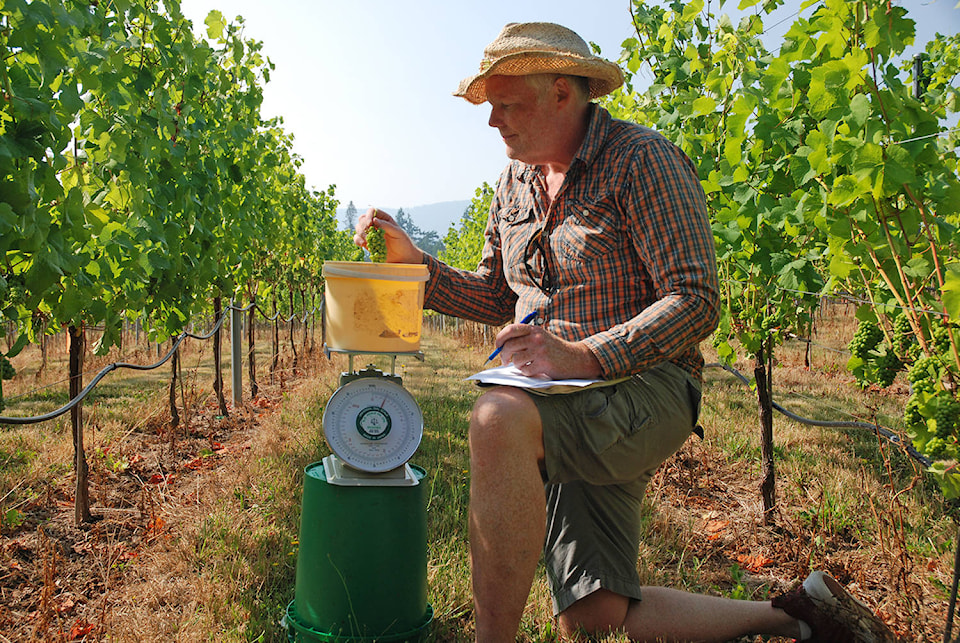Leave it to wine lovers to create one of the most unique adaptations to climate change yet.
While global warming is threatening winemaking regions around the world, University of Victoria ecologist John Volpe believes that Vancouver Island’s wine industry has the potential to benefit from the warmer, drier weather.
Volpe’s UVic research is in ecology, biodiversity, gastronomy, sustainability and food production but he’s also a certified sommelier. He’ll undertake the two-year study with initial data collected this summer by Andrew Watts.
Watts’ field work will be conducted at Blue Grouse Estate Winery in Duncan, and Unsworth Vineyards (where he’s currently working) and Enrico Winery in the Cowichan Valley. It will focus on pinot gris, the single most popular grape for wine in B.C.
The research findings will offer value to growers and winemakers across the province.
It will also form the foundation of Watt’s masters thesis in UVic’s School of Environmental Studies. The research study will combine innovative spectrometry technology with field manipulations at all three vineyards to pinpoint the perfect time to harvest grapes, Volpe says.
It’s not all wine and romance and the science is technical.
“The novelty of our approach stems from the use of a specific type of molecular analysis to assess the effect of our field manipulations,” Volpe says. “We expect to gain insights on how to make great wine at a resolution never before available and it will help growers harvest with confidence that their produce is in peak state to produce the best wines possible.”
When it comes down to it, it’s still about harvesting “at the exact time when molecules responsible for aroma and flavour are at maximum density” for physiological ripeness.
The challenge, is it occurs only briefly.
Vineyards use a “best guess” approach by testing sugar ripeness, which is easily measured in the field. This new study proposes to identify markers of physiological ripeness instead. The approach also involves minimal intervention on the vine, which will allow the wine to most closely reflect the ecosystem in which the grapes were grown.
“It matters entirely what’s in the vineyard if we want to allow the best expression of the land – the ‘placyness’ or terroir – in the wine,” adds Volpe.
Watts and Volpe will test the use of kaolin as a new method of boosting grape quality, which has not yet been systematically examined in North America, he said.
Volpe expects to present preliminary findings next spring, with the study wrapping up in 2020. Funding is provided by the Wine Islands Growers Association via the Investment Agriculture Foundation of B.C.
“This is an exciting opportunity to bring scientific rigour and analysis to measuring ripeness parameters and to learn how they vary with viticulture practices,” says Lamont Brooks, UVic alumnus and president of WIGA. “This important new knowledge will allow our winery businesses to continue to produce and improve the crisp aromatic wines so characteristic of our growing area.”
